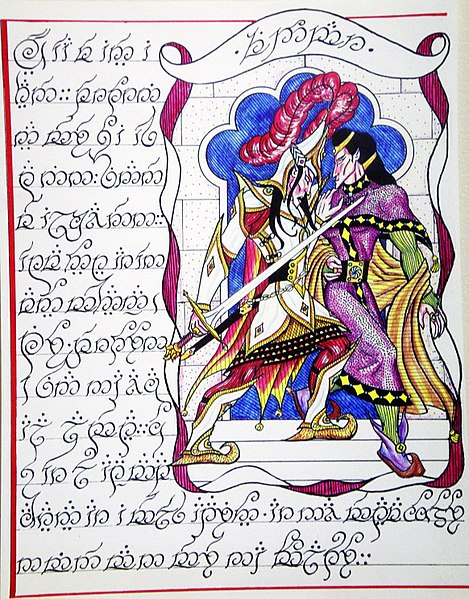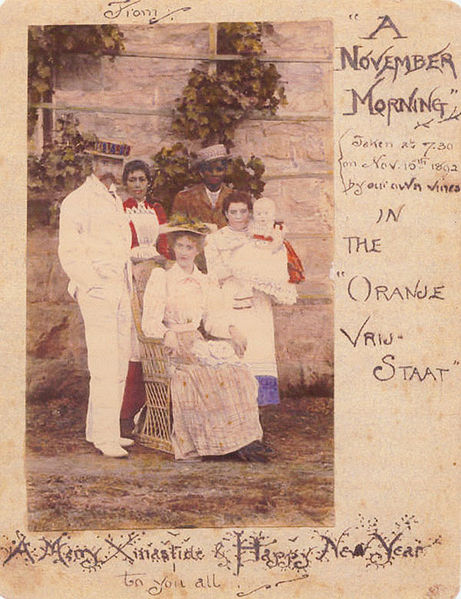The Silmarillion is a book consisting of a collection of myths and stories in varying styles by the English writer J. R. R. Tolkien. It was edited and published posthumously by his son Christopher Tolkien in 1977, assisted by Guy Gavriel Kay, who became a fantasy author. It tells of Eä, a fictional universe that includes the Blessed Realm of Valinor, the ill-fated region of Beleriand, the island of Númenor, and the continent of Middle-earth, where Tolkien's most popular works—The Hobbit and The Lord of the Rings—are set. After the success of The Hobbit, Tolkien's publisher, Stanley Unwin, requested a sequel, and Tolkien offered a draft of the writings that would later become The Silmarillion. Unwin rejected this proposal, calling the draft obscure and "too Celtic", so Tolkien began working on a new story that eventually became The Lord of the Rings.
Artistic response to The Silmarillion: Fëanor threatens Fingolfin, by Tom Loback, 2007
Tolkien went to great lengths to present his work as a collection of documents "within the fictional world", including preparing facsimile pages from The Book of Mazarbul to support the story and bring readers into his fantasy.
John Ronald Reuel Tolkien was an English writer and philologist. He was the author of the high fantasy works The Hobbit and The Lord of the Rings.
Tolkien in the 1920s
1892 Christmas card with a coloured photo of the Tolkien family in Bloemfontein, sent to relatives in Birmingham, England
Birmingham Oratory, where Tolkien was a parishioner and altar boy (1902–1911)
King Edward's School in Birmingham, where Tolkien was a pupil (1900–1902, 1903–1911)






